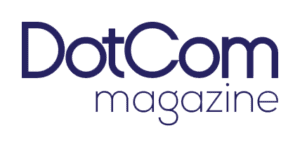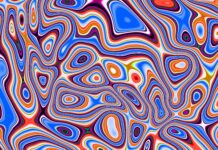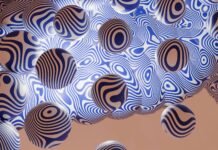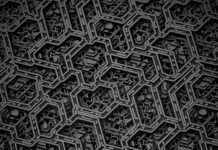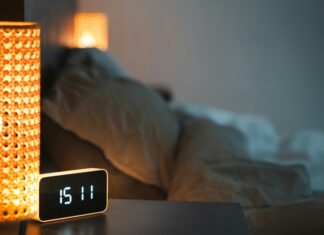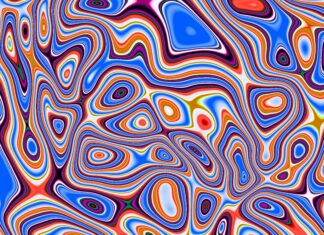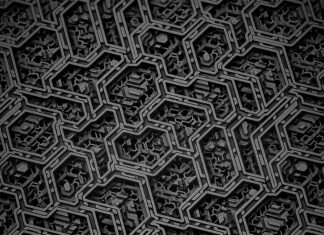The emergence of AI in the fashion accessories has brought seismic shifts to how we design, produce, and market style items. From AI-powered personalization engines to predictive analytics in trend forecasting, AI in the fashion accessories has reshaped every link in the fashion supply chain. Whether it’s machine learning for optimizing inventory or computer vision assisting in virtual try-ons, AI in the fashion accessories is becoming essential for brands aiming to remain relevant, innovative, and competitive.
1. AI Is Personalizing the Fashion Accessories Experience Like Never Before
Artificial intelligence is ushering in an era where fashion is hyper-personalized. From AI-powered apps that analyze customer preferences to virtual stylists that offer customized suggestions for sunglasses, handbags, and jewelry, AI is driving a tailored shopping experience. This not only increases customer satisfaction but also boosts conversions and brand loyalty.
AI in fashion accessories personalization uses customer behavior, past purchases, browsing history, and even social media activity to predict the exact style of accessories a consumer might prefer. Brands like Pandora and Gucci are already leveraging this capability to enhance customer engagement. This isn’t just convenience — it’s revolution.
2. Real-Time Trend Forecasting with AI Offers Strategic Advantages
AI’s capacity to process vast datasets makes it a powerful trend predictor. AI in the fashion accessories space uses algorithms to scan millions of images from social platforms, runways, and e-commerce stores to identify micro and macro trends before they go mainstream. This means accessory designers can produce what people will want tomorrow, not what was hot yesterday.
This forecasting accuracy minimizes inventory waste and speeds up production cycles, a vital edge in the fast-paced fashion industry. Platforms like Heuritech are leading the way, empowering brands with data-driven insights to create timely and relevant collections.
3. Smart Wearables Are Redefining Fashion Accessories
Fashion accessories are becoming functional with the introduction of smart wearables. Think of rings that track your mood, bracelets that monitor health stats, and smart handbags with built-in charging ports. AI enhances these products by allowing them to learn user patterns and adapt accordingly.
The convergence of fashion and tech has elevated wearables beyond utility. Today’s AI-enhanced fashion accessories are stylish, intelligent, and personalized. Companies like Oura and Bellabeat exemplify this evolution by blending chic aesthetics with AI-powered functionality.
4. Virtual Try-Ons Powered by AI Increase Online Conversions
With the increase in online shopping, AI in the fashion accessories realm has responded by enhancing virtual try-on technology. Using augmented reality and computer vision, customers can now “try on” watches, glasses, or earrings in real time through their devices.
This immersive experience reduces return rates and enhances buyer confidence. AI adjusts these try-ons to various lighting conditions, face shapes, and movements, creating a seamless experience. Brands like Warby Parker and Michael Kors have embraced this AI technology with impressive results.
5. AI Streamlines Inventory and Supply Chain Management
AI isn’t just changing how accessories are designed and sold — it’s also transforming backend logistics. Through predictive analytics, AI forecasts demand and optimizes inventory levels, ensuring the right accessories are available at the right time.
This minimizes overproduction, lowers warehousing costs, and reduces environmental impact — all while boosting profit margins. Retailers like Zara and ASOS are integrating AI to monitor sales patterns and adjust stock in real time, resulting in more efficient operations and happier customers.
6. Sustainability Gains Traction with AI-Driven Design and Waste Reduction
The fashion industry has long faced criticism for its environmental footprint. AI in fashion accessories is addressing this through better materials optimization, sustainable design practices, and waste reduction. Generative design algorithms can create thousands of variations of a product using minimal resources.
AI also aids in identifying the most sustainable supply chain routes and predicting which designs will minimize returns or waste. These environmentally conscious strategies not only improve a brand’s image but also align with increasing consumer demand for ethical fashion.
7. AI-Powered Design Tools Fuel Creative Innovation
Artificial intelligence is not replacing designers — it’s empowering them. Tools like GANs (Generative Adversarial Networks) help create unique accessory designs by learning from thousands of past trends and suggesting fresh combinations of textures, colors, and shapes.
AI can even simulate how different materials will look and behave before a prototype is created. This drastically shortens the design-to-market cycle and allows for more experimentation without increased cost. Designers at brands like Nike and Burberry are already incorporating AI in this collaborative and creative capacity.
8. Enhanced Customer Service Through AI Chatbots and Assistants
AI-driven customer service tools are revolutionizing the post-sale experience in fashion accessories. Chatbots can handle inquiries about product care, availability, returns, and style advice 24/7, delivering instant support.
What makes these AI chatbots exceptional is their ability to learn and improve over time. With each interaction, they become more accurate and personalized, offering a human-like experience that builds customer trust and loyalty. This automation frees human agents to focus on more complex tasks.
9. AI-Driven Marketing Campaigns Are Boosting ROI for Fashion Brands
Marketing in the AI age is smarter, more targeted, and results-driven. AI in the fashion accessories sector uses machine learning algorithms to create highly personalized ad campaigns. These systems analyze customer profiles and behavior to deliver the right message at the right time via the right platform.
From influencer marketing insights to dynamic retargeting ads, AI ensures your fashion accessory gets visibility among the most receptive audiences. Brands using AI marketing platforms like Persado have seen improved engagement, click-through rates, and ultimately, sales.
10. The Competitive Edge: Embracing AI Is No Longer Optional
The integration of AI in the fashion accessories industry is not a luxury; it’s a necessity for survival. Brands that adopt AI tools see faster growth, deeper customer insights, and better creative execution. Conversely, those that resist risk obsolescence in an industry moving at lightning speed.
AI is the silent engine driving every innovative fashion accessory brand. Whether you’re a small boutique or a global powerhouse, the message is clear: those who embrace AI will lead — and those who don’t will lag behind.
Conclusion: A Fashion Future Shaped by AI
The role of AI in the fashion accessories industry has evolved from experimental to essential. Brands that harness AI effectively can offer hyper-personalized experiences, optimize supply chains, deliver smart products, and operate more sustainably. As we’ve explored, AI in the fashion accessories space is redefining not just what we wear — but how we experience style, creativity, and identity.
In the years ahead, we can expect AI to drive even more disruption and opportunity. Staying informed and adaptive will be key to not just surviving, but thriving. From AI-powered trend forecasting to intelligent customer interactions, the future of AI in the fashion accessories is full of potential — and it’s already unfolding.
